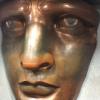Lathe Collet Sizes
-
Recently Browsing
- No registered users viewing this page.
-
Topics
-
Posts
-
Hi all, needing a little help. I have an old Casio AQ-321G, but have no idea what battery it takes. I've looked around online, but cannot see anything... I see a 309 stamped on the case back, could this be it....? Can you please help, below are some pictures:
-
By nevenbekriev · Posted
The radial teeth are for hte seconds register, and the other (which is simple and doesn' take away significant torque from the train) for the minutes register. -
The original 6139A manual is very clear in how to disassemble and how to assemble ...... step-by-step. However I haven't seen the 3169B manual, even in the Japanese version around, which clearly highlights the difference in center-wheel. 6139A Seiko Technical Guide.pdf 6139_A.pdf 6139A.pdf 6139b.pdf 6139B repair guide jp.pdf
-
By watchweasol · Posted
Hi as an addition a pertaining to the assembly of a 6319B which will be handy for those working on this caliber Polly's 6139 guide.pdf 6139A.pdf 6139B.pdf







Recommended Posts
Join the conversation
You can post now and register later. If you have an account, sign in now to post with your account.
Note: Your post will require moderator approval before it will be visible.